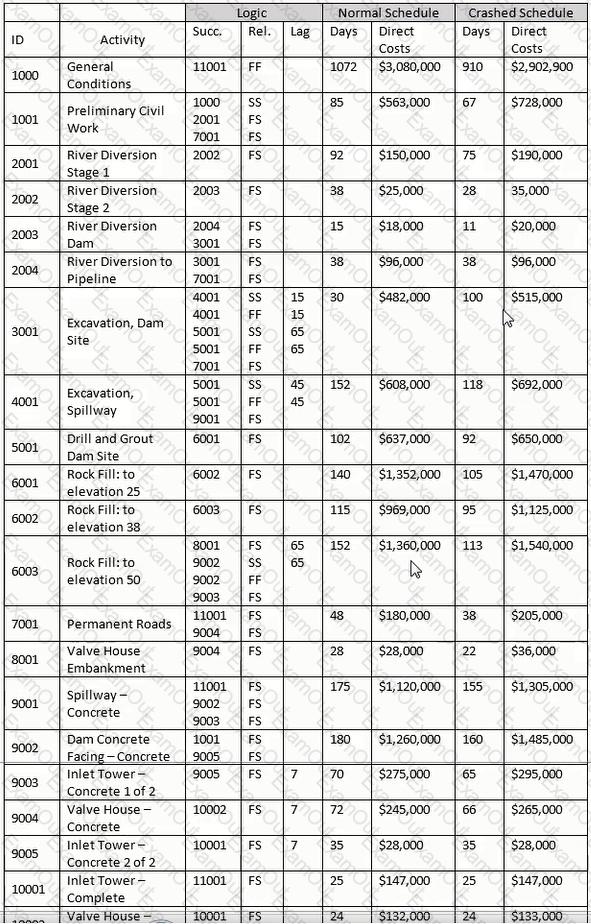Each of the following accurately describes total float in a schedule EXCEPT:
The addition of which of the following relationships would cause a logic loop?
Based on the available scope information and required accuracy, different cost estimated models or methodologies are utilized Which of the following statements is NOT true?
Using the "normal" schedule, theoretically construct a hammock for activities 2001 through 2004. What is the duration of the hammock?

The project goals_________.
When project risk is reflected in scheduled activities, what is the most significant characteristic of those activities?
You are retained by a contractor who asks you to perform a simple as-planned versus as-built analysis (APAB) of a large hydro-electric dam project that took more than five years to complete. Your analysis will form the basis of a change order that requests a time extension. You suggest using a different methodology for quantifying the delay. Which of the following reasons for recommending a different analysis does NOT apply to a simple APAB analysis?
The project team must communicate the project plan, goals and objectives to all stakeholders to ensure the stakeholders understand the plan, goals and objectives and then continue this communication throughout the project life Which statement below would stakeholders NOT be expected to contribute?
Why does activity 11001 not show successor activities?

Which of the following documents is most likely to be of the LEAST value to a planner/scheduler when planning a contractor's baseline critical path schedule for the construction of a large high-clearance bridge located very near an airport? The contractor has been awarded the contract.

